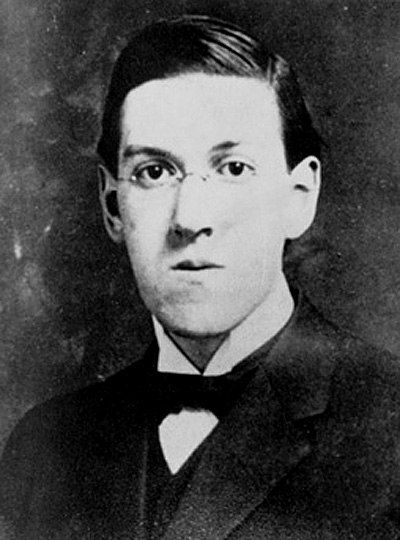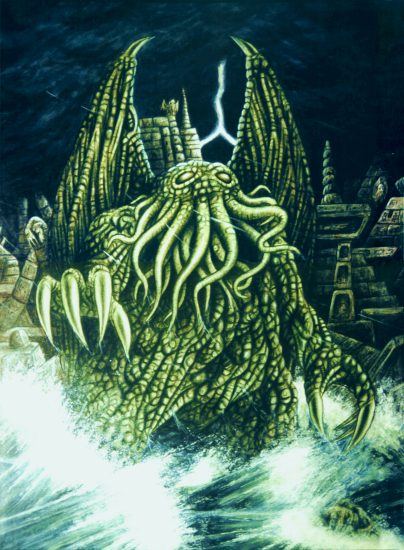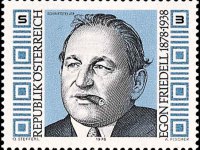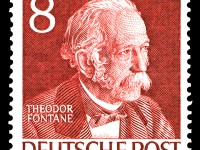
Howard Philips Lovecraft (1890-1937)
On March 15, 1937, Howard Philips Lovecraft – better known as H.P. Lovecraft – author of horror, fantasy and science fiction, especially the subgenre known as weird fiction, passed away. He is renown as the originator of the Cthulhu Mythos story cycle and the Necronomicon, a fictional magical textbook of rites and forbidden lore. My first acquaintance with the weird literary fiction of H.P. Lovecraft dates back to my schooldays, when hanging around in the public library, looking for something interesting to read. Being an adolescent is perhaps the best time to read Lovecraft, as author Joyce Carol Oates says. In these days, I really liked to read science fiction stories. Thus, when browsing the library shelves, I encountered this strange author, whose books were so different from what I had read before.
“The oldest and strongest emotion of mankind is fear, and the oldest and strongest kind of fear is fear of the unknown…”
– H.P. Lovecraft, from ‘Supernatural Horror in Literature’, (1927)
Arabian Nights
Howard Philips Lovecraft was born on August 20, 1890, in Providence, Rhode Island as the only child of Winfield Scott Lovecraft, a traveling salesman of jewelry and precious metals, and Sarah Susan Phillips Lovecraft, who could trace back her ancestry to the Massachusetts Bay Colony in 1631. In 1893, when Lovecraft was three, his father became acutely psychotic while on a business trip and was placed in Butler Hospital, where he remained until his death in 1898. Now, the upbringing of the boy fell to his mother, his two aunts, and especially his grandfather, the prominent industrialist Whipple Van Buren Phillips. Lovecraft was a precocious youth: he was reciting poetry at age two, reading at age three, and writing at age six or seven. His earliest enthusiasm was for the Arabian Nights, which he read by the age of five. It was at this time that he adapted the pseudonym of Abdul Alhazred, who later became the author of the mythical grimoire Necronomicon of his writings.
Early Years
As a boy Lovecraft was somewhat lonely and suffered from frequent illnesses, many of them apparently psychological. His attendance at School was sporadic, but Lovecraft was soaking up much information through independent reading. Lovecraft loved the works of Edgar Allan Poe,[6] to which he was introduced by his grandfather, and developed a special interest in astronomy. He began to produce hectographed journals, The Scientific Gazette (1899–1907) and The Rhode Island Journal of Astronomy (1903–07), for distribution amongst his friends. Actually, Lovecraft’s first appearance in print occurred in 1906, when he wrote a letter on an astronomical matter to The Providence Sunday Journal. His grandfather‘s death in 1904 greatly affected Lovecraft‘s life. Mismanagement of his grandfather‘s estate left his family in a poor financial situation, and they were forced to move into much smaller accommodations.
First Literary Efforts
Lovecraft started out as a would-be journalist, joining the United Amateur Press Association in 1914. The following year, he launched his self-published magazine The Conservative for which he wrote several essays and other pieces. While he had reportedly dabbled in fiction early on, Lovecraft became more serious about writing stories around 1917. Many of these early works were influenced by the writings of Lord Dunsany, an Irish author of fantasy tales, as well as Lovecraft‘s early favorite Edgar Allan Poe.[6]
“May the merciful gods, if indeed there be such, guard those hours when no power of the will, or drug that the cunning of man devises, can keep me from the chasm of sleep…”
– H.P. Lovecraft, from ‘Hypnos’, (1922)

Cthulhu and R’Lyeh, @BenduKiwi
Weird Tales and The Call of Cthulhu
The horror magazine Weird Tales bought some of Lovecraft‘s stories in 1923, giving him his first taste of literary success. By that time, he began to build up a huge network of correspondents. His lengthy and frequent missives would make him one of the great letter writers of the century. Among his correspondents were Robert Bloch (Psycho), Clark Ashton Smith, and Robert E. Howard (Conan the Barbarian). It is estimated that Lovecraft wrote about 100,000 letters, from which about a fifth has survived. After his mother‘s death and a failed marriage in the following year, Lovecraft returned to Providence, Rhode Island and began work on some of his best stories. “The Call of Cthulhu” came out in 1928 in Weird Tales, and it perhaps best illustrated Lovecraft‘s efforts at creating an otherworldly type of terror. This period, the last decade of his life, was Lovecraft‘s most prolific; in that time he produced short stories for the leading pulp publications of the day as well as novels, such as The Case of Charles Dexter Ward and At the Mountains of Madness. In 1936, Lovecraft was diagnosed with cancer of the small intestine, and he also suffered from malnutrition. He lived in constant pain until his death on March 15, 1937, in Providence.
“The most merciful thing in the world, I think, is the inability of the human mind to correlate all its contents. We live on a placid island of ignorance in the midst of black seas of infinity, and it was not meant that we should voyage far. The sciences, each straining in its own direction, have hitherto harmed us little; but some day the piecing together of dissociated knowledge will open up such terrifying vistas of reality, and of our frightful position therein, that we shall either go mad from the revelation or flee from the light into the peace and safety of a new dark age.”
– H.P. Lovecraft, from ‘The Call of Cthulhu’, (1928)
The Reoccurring Scheme in Lovecraft’s Stories
In his works forbidden knowledge is one of the a central themes. Many characters that he wrote are driven by curiosity or scientific endeavor, and in many of his stories the knowledge they uncover is filling the seeker with regret from what they have learned, destroying them psychically, or completely destroying the person who holds the knowledge. Another recurring theme in Lovecraft‘s stories is the idea that descendants in a bloodline can never escape the stain of crimes committed by their forebears, at least if the crimes are atrocious enough. Descendants may be very far removed, both in place and in time, from the act itself, and yet, they may be haunted by the revenant past. Interestingly, Lovecraft was relatively unknown during his own time. H. P. Lovecraft‘s writing, particularly the so-called Cthulhu Mythos, has influenced fiction authors including modern horror and fantasy writers such as Stephen King or Neil Gaiman. Even the Argentine writer and librarian Jorge Luis Borges wrote a story dedicated to H. P. Lovecraft, the plot of which contained many parallels to Lovecraft’s stories, whom he in fact considered “an involuntary parodist of Poe.” [7]
“That is not dead which can eternal lie, And with strange aeons even death may die.”
– H.P. Lovecraft, from ‘The Call of Cthulhu’, (1928)
Gregory B. Sadler, H.P. Lovecraft’s Universe of the Elder Gods – Worlds of Speculative Fiction (lecture 19), [9]
References and Further Reading:
- [1] S.T.Joshi: Howard Phillips Lovecraft:The Life of a Gentleman of Providence
- [2] H.P. Lovecraft at the Internet Movie Database
- [3] The H.P. Lovecraft Archive
- [4] H.P. Lovecraft at Wikidata
- [5] Works of H. P. Lovecraft, via Wikisource
- [6] The Mysterious Death of Edgar Allan Poe, SciHi Blog, October 7, 2012.
- [7] Jorge Luis Borges and the Library of Babel, SciHi Blog, August 24, 2012.
- [8] Clark Ashton Smith – The Last of the Great Romantics, SciHi Blog
- [9] Gregory B. Sadler, H.P. Lovecraft’s Universe of the Elder Gods – Worlds of Speculative Fiction (lecture 19), Gregory B. Sadler @ youtube
- [10] de Camp, L. Sprague (1975). Lovecraft: A Biography (First ed.). Garden City, New York: Doubleday.
- [11] Lovecraft, H. P. (August 20, 2009a). “At the Mountains of Madness”. The H. P. Lovecraft Archive.
- [12] Frierson, Meade; Frierson, Penny (March 1972). HPL: A Tribute to Howard Phillips Lovecraft. Birmingham, Alabama
- [13] Wohleber, Curt (December 1995). “The Man Who Can Scare Stephen King”. American Heritage. Vol. 46, no. 8.
- [14] Anderson, James Arthur; Joshi, S. T. (2011). Out of the Shadows: A Structuralist Approach to Understanding the Fiction of H. P. Lovecraft. Rockville, Maryland: Wildside Press
- [15] Timeline for H. P. Lovecraft, via Wikidata





